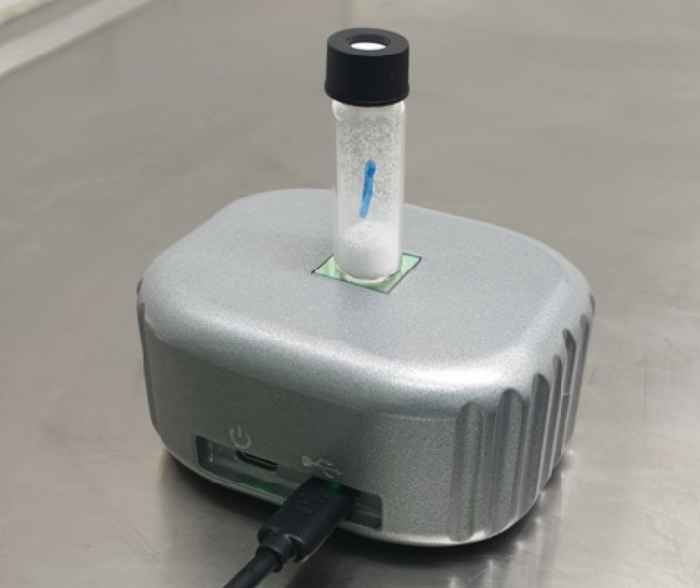Rapid on-scene chemical identification of intact explosives
28 April 2023
Van Damme carried out her research under supervision of Prof. Arian van Asten at the University of Amsterdam’s Van ’t Hoff Institute for Molecular Sciences. She cooperated with experts at the Netherlands Forensic Institute, the Dutch National Police and TNO Defence, Safety and Security. The results of her study illustrate the substantial added value that portable NIR could bring for the rapid and robust chemical identification of intact explosives.
Abstract
There is an ongoing forensic and security need for rapid, on-scene, easy-to-use, non-invasive chemical identification of intact energetic materials at pre-explosion crime scenes. Recent technological advances in instrument miniaturization, wireless transfer and cloud storage of digital data, and multivariate data analysis have created new and very promising options for the use of near-infrared (NIR) spectroscopy in forensic science.

This study shows that in addition to drugs of abuse, portable NIR spectroscopy with multivariate data analysis also offers excellent opportunities to identify intact energetic materials and mixtures. NIR is able to characterize a broad range of chemicals of interest in forensic explosive investigations, covering both organic and inorganic compounds. NIR characterization of actual forensic casework samples convincingly shows that this technique can handle the chemical diversity encountered in forensic explosive investigations.
The detailed chemical information contained in the 1350–2550 nm NIR reflectance spectrum allows for correct compound identification within a given class of energetic materials, including nitro-aromatics, nitro-amines, nitrate esters, and peroxides. In addition, the detailed characterization of mixtures of energetic materials, such as plastic formulations containing PETN (pentaerythritol tetranitrate) and RDX (trinitro triazinane), is feasible.
The results presented illustrate that the NIR spectra of energetic compounds and mixtures are sufficiently selective to prevent false-positive results for a broad range of food-related products, household chemicals, raw materials used for the production of home-made explosives, drugs of abuse, and products that are sometimes used to create hoax improvised explosive devices. However, for frequently encountered pyrotechnic mixtures, such as black powder, flash powder, and smokeless powder, and some basic inorganic raw materials, the application of NIR spectroscopy remains challenging. Another challenge is presented by casework samples of contaminated, aged, and degraded energetic materials or poor-quality HMEs (homemade explosives), for which the spectral signature deviates significantly from the reference spectra, potentially leading to false-negative outcomes.
Paper details
Irene M. van Damme, Pol Mestres-Fitó, Henk-Jan Ramaker, Annemieke W. C. Hulsbergen, Antoine E. D. M. van der Heijden, Ruben F. Kranenburg, and Arian C. van Asten: Rapid and On- SceneChemical Identification of Intact Explosives with Portable Near-Infrared Spectroscopy and Multivariate Data Analysis. Sensors 2023, 23, 3804. DOI: 10.3390/s23083804